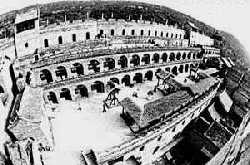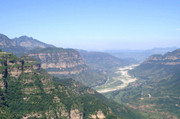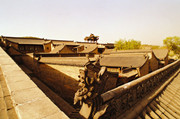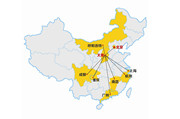Northern China's First Ancient Castle
Updated: 2012-03-01
 Yu Tower -- easy to defend, hard to attack
Yu Tower -- easy to defend, hard to attack
 Yu Tower, a seven-storied castle in Guoyu Town, stands opposite to Heshan Tower on the other side of the river. Constructed after Heshan Tower, Yu Tower is larger in scale and more practical in design. More living facilities such as cooking ranges were installed in Yu Tower and secret, wider tunnels.
Yu Tower, a seven-storied castle in Guoyu Town, stands opposite to Heshan Tower on the other side of the river. Constructed after Heshan Tower, Yu Tower is larger in scale and more practical in design. More living facilities such as cooking ranges were installed in Yu Tower and secret, wider tunnels.
Situated at the foot of the hill and surrounded by a small river, Guoyu Castle is located directly behind the city wall. The soldiers' hideout cells behind the ancient city wall witnessed the disastrous times of war. Unlike other cells of this kind, these cavities were all connected by corridor-like paths resembling a string of beads, rendering the cells more flexible and practical in wartime. Outside the cells are holes used to keep watch and shoot down the enemy. Roomy, with narrow openings, the cells are easy to defend but hard to attack.
 Diyi City - the impregnable "Honeycomb Wall"
Diyi City - the impregnable "Honeycomb Wall"
Diyi city was constructed on a natural huge rock that was water locked on three sides, with Qinhe River encircling the city. Diyi city was named after the Qinhe River, which was originally known as Yi Water in the Ming and Qing dynasties.
Reputed as the "honeycomb wall," the city is famous for its unbreakable city wall, which was made of cyan bricks on the outside and a special mixed substance built of thickly and orderly lined crucible and stone strips on the inside. According to historians, there have been more than 54 such castles in the Qinhe River Valley, most of which were constructed in the Ming and Qing dynasties.




